Fresh eggs for weeks: Patented LSU research overcomes food preservation challenges
October 31, 2024
Eggs are a staple food item for millions of households — nutritious, vitamin-rich, and a complete source of protein. They are also cost-effective and readily available in many parts of the world, including developing regions.
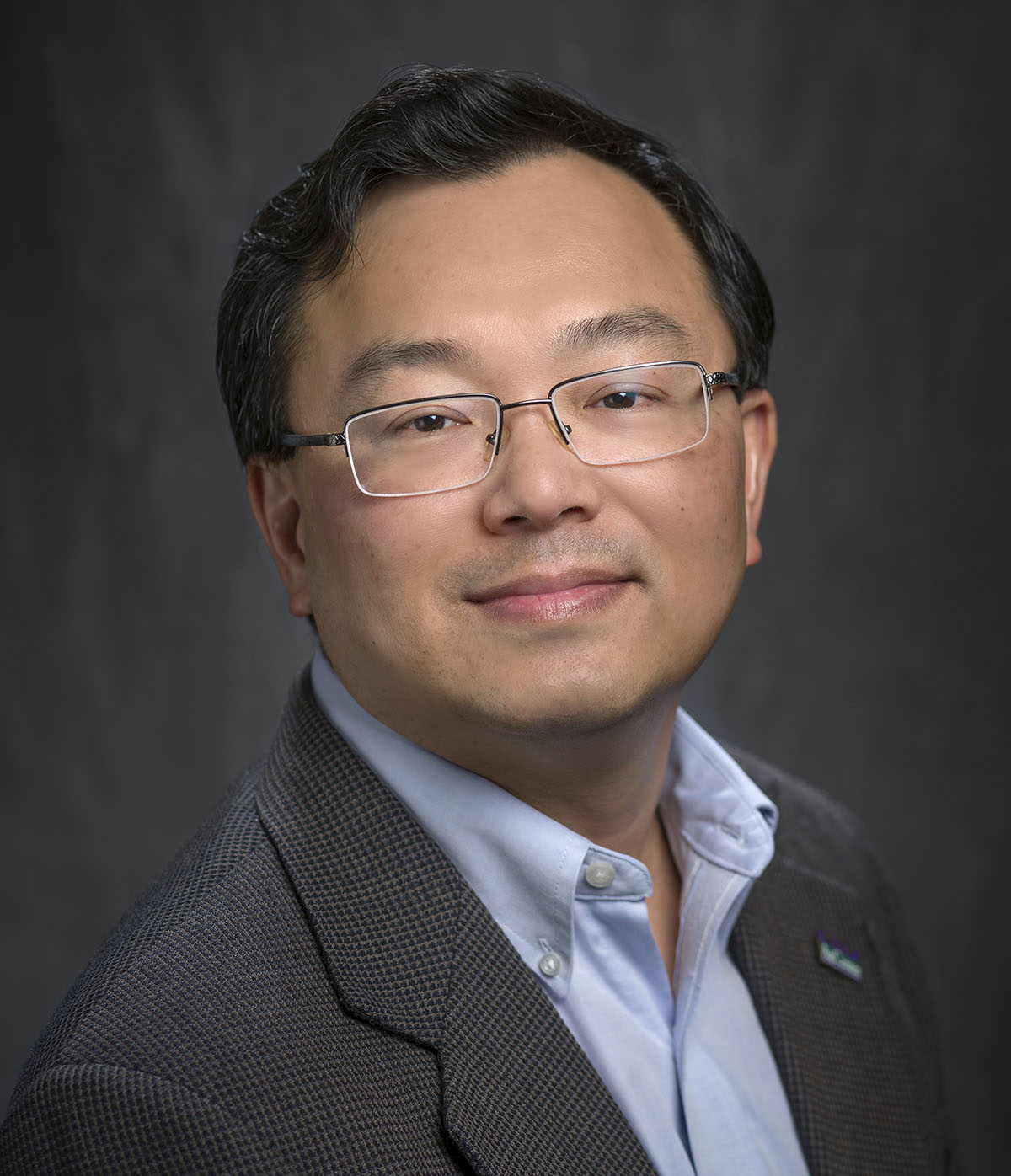
Witoon Prinyawiwatkul, LSU AgCenter researcher
However, raw eggs have a limited shelf life before they go bad, particularly at room temperature, and they are susceptible to contamination by such bacteria as Salmonella.
LSU researchers are helping to address these issues through their work with chitosan, a natural substance created from the shells of crustaceans that has shown promise as a food preservative and coating to help keep foods safer from bacteria.
“For raw whole eggs, several problems are encountered during storage, including weight loss, interior quality deterioration, and microbial contamination,” LSU AgCenter researcher Witoon Prinyawiwatkul said. “Thus, it is important to protect the eggshells against moisture loss and microbial contamination for quality preservation of eggs.
“A chitosan coating can offer a protective barrier against bacterial contamination and water transfer through the eggshell, thus extending the shelf life of eggs.”
Why Chitosan?
Prinyawiwatkul’s interest in chitosan grew from a common Louisiana problem, an excess of crawfish shells.
“When I came to LSU in 1996, my very first research project was utilization of undersized crawfish produced in Louisiana,” he said, explaining that the work resulted in a lot of crawfish-shell waste material.
At the time, LSU professor Samuel Meyers of Food Science and visiting professor Hong Kyoon No, a former PhD student of Meyers, inspired Prinyawiwatkul to use the waste to research chitosan, and he continued to collaborate with No on the topic for a decade or more.
Chitosan has gained popularity as a dietary supplement and for medical purposes. As a food preservative, chitosan products are currently in the market — used on fruit and vegetables, for example.
However, there are challenges. Working with high-molecular-weight chitosan, which has properties that make for a higher-concentration solution and a better food protectant, can be inefficient and problematic.
Current processes require the chitosan be dissolved in an acidic liquid such as vinegar for eight to 10 hours before it is ready to be applied as a coating to food. Not only is this inefficient, but the acid also introduces an unpleasant odor and color in the food coated.
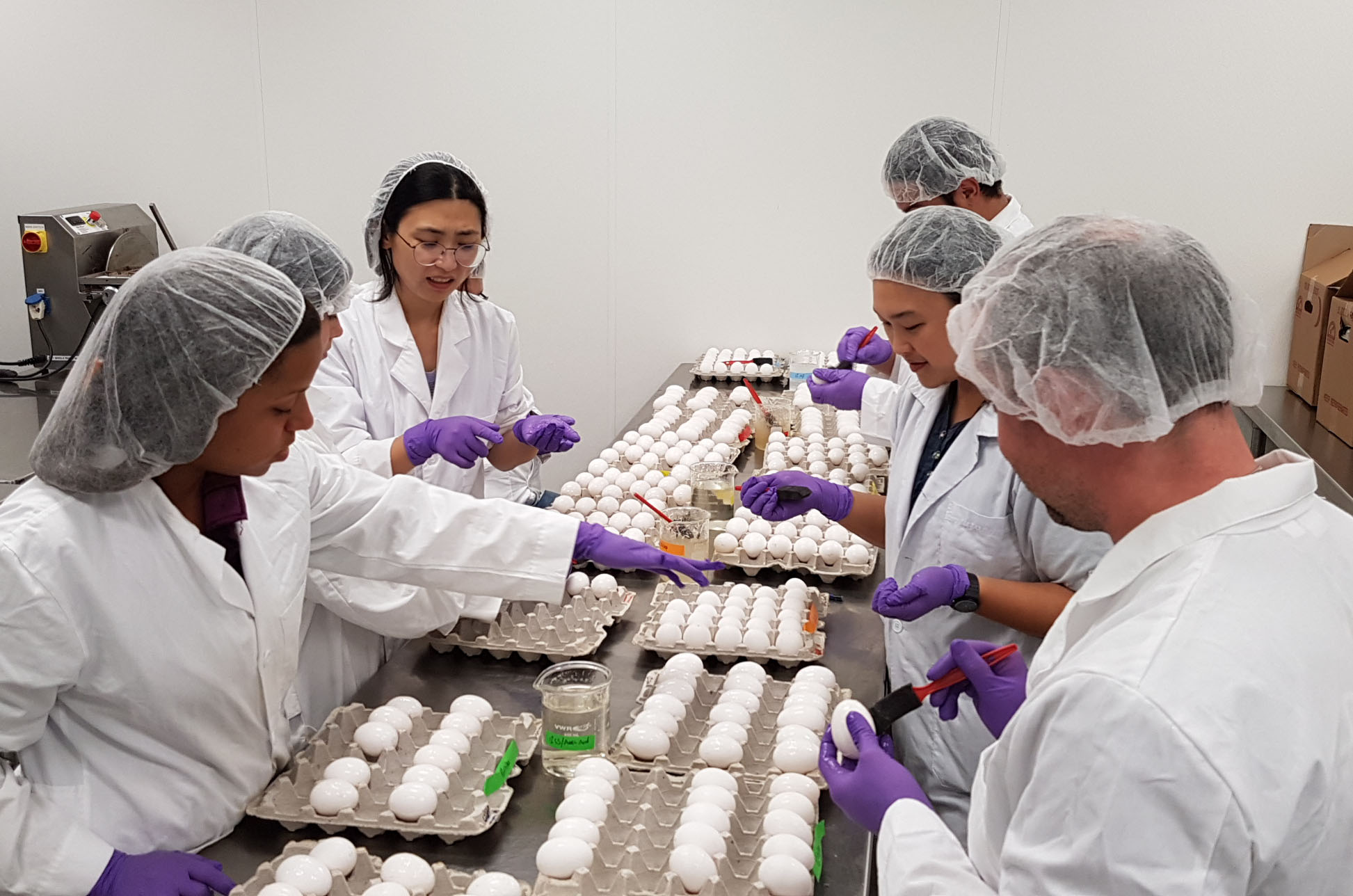
Researchers hand coat eggs with the chitosan solution.
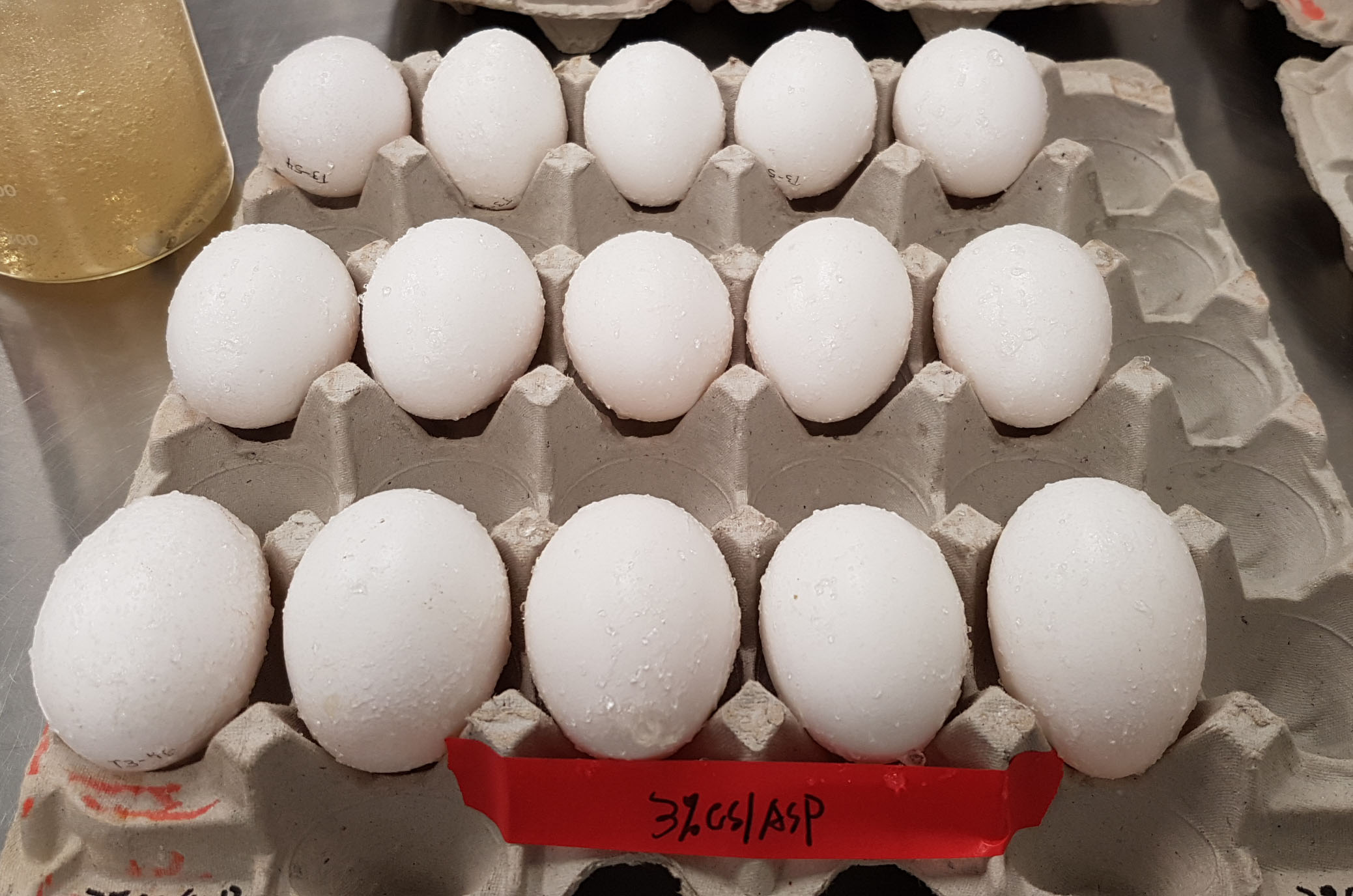
Eggs coated with the chitosan solution.
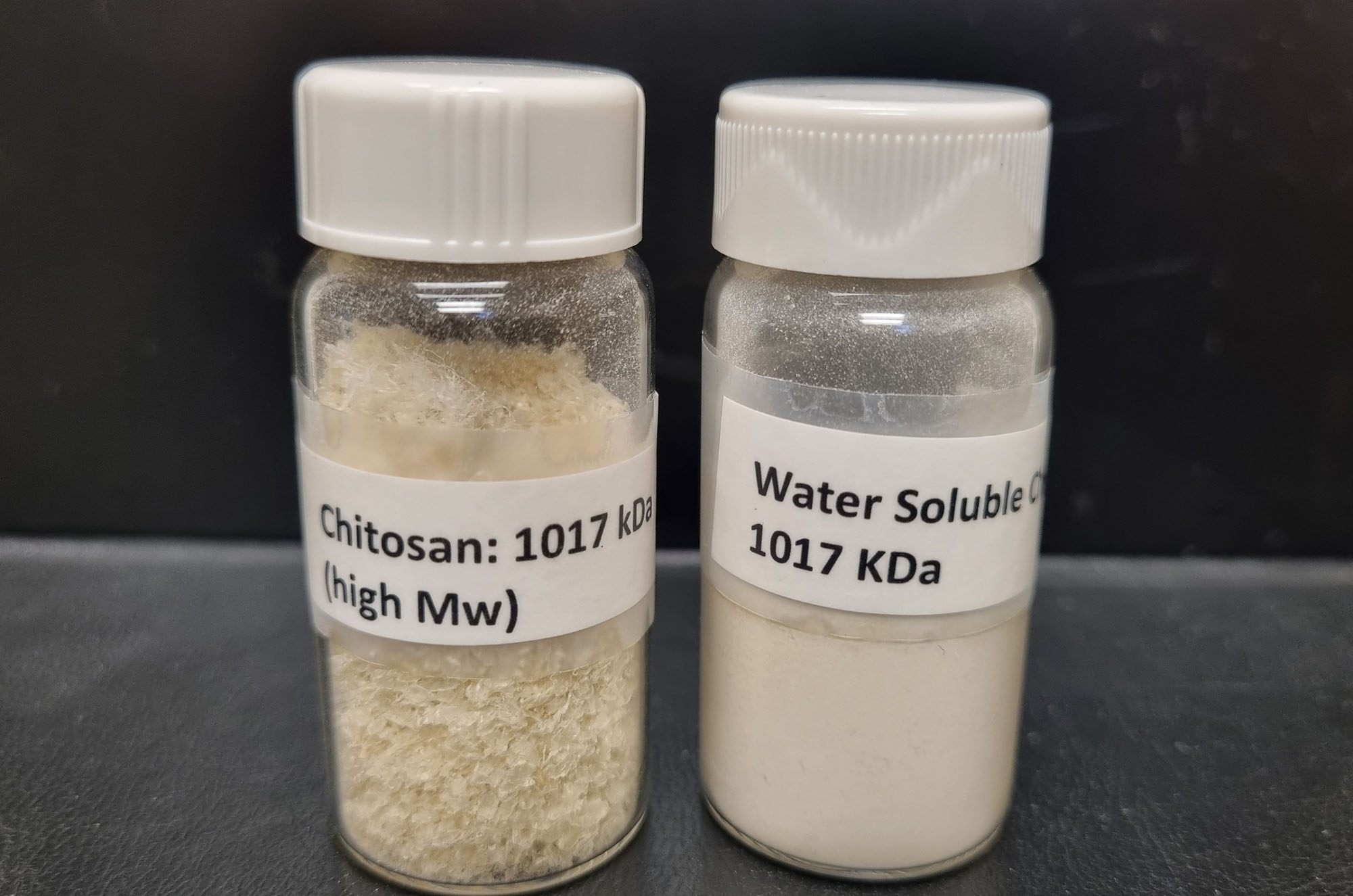
Chitosan in its solid form.
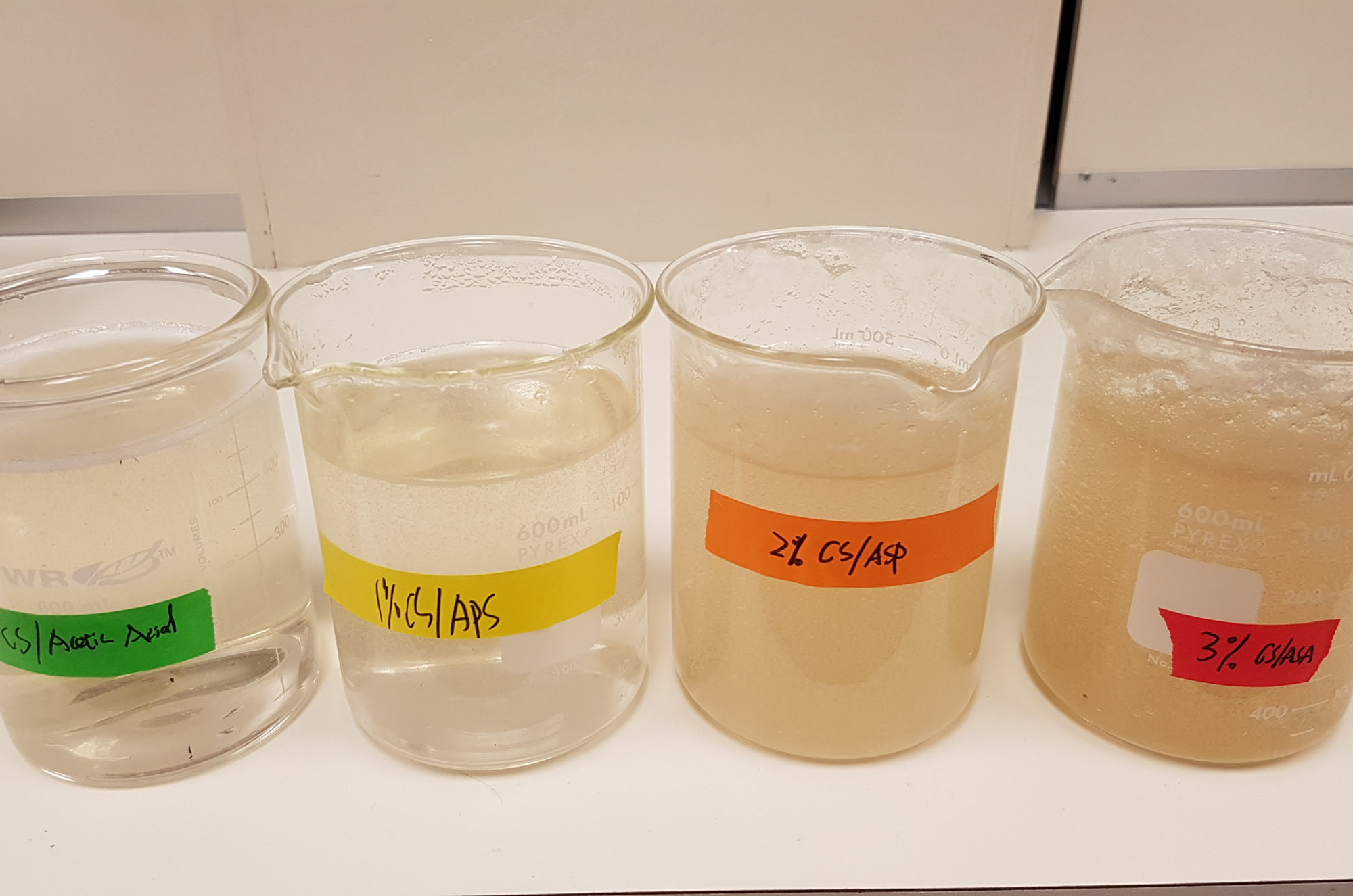
Chitosan-based solutions in different concentrations.
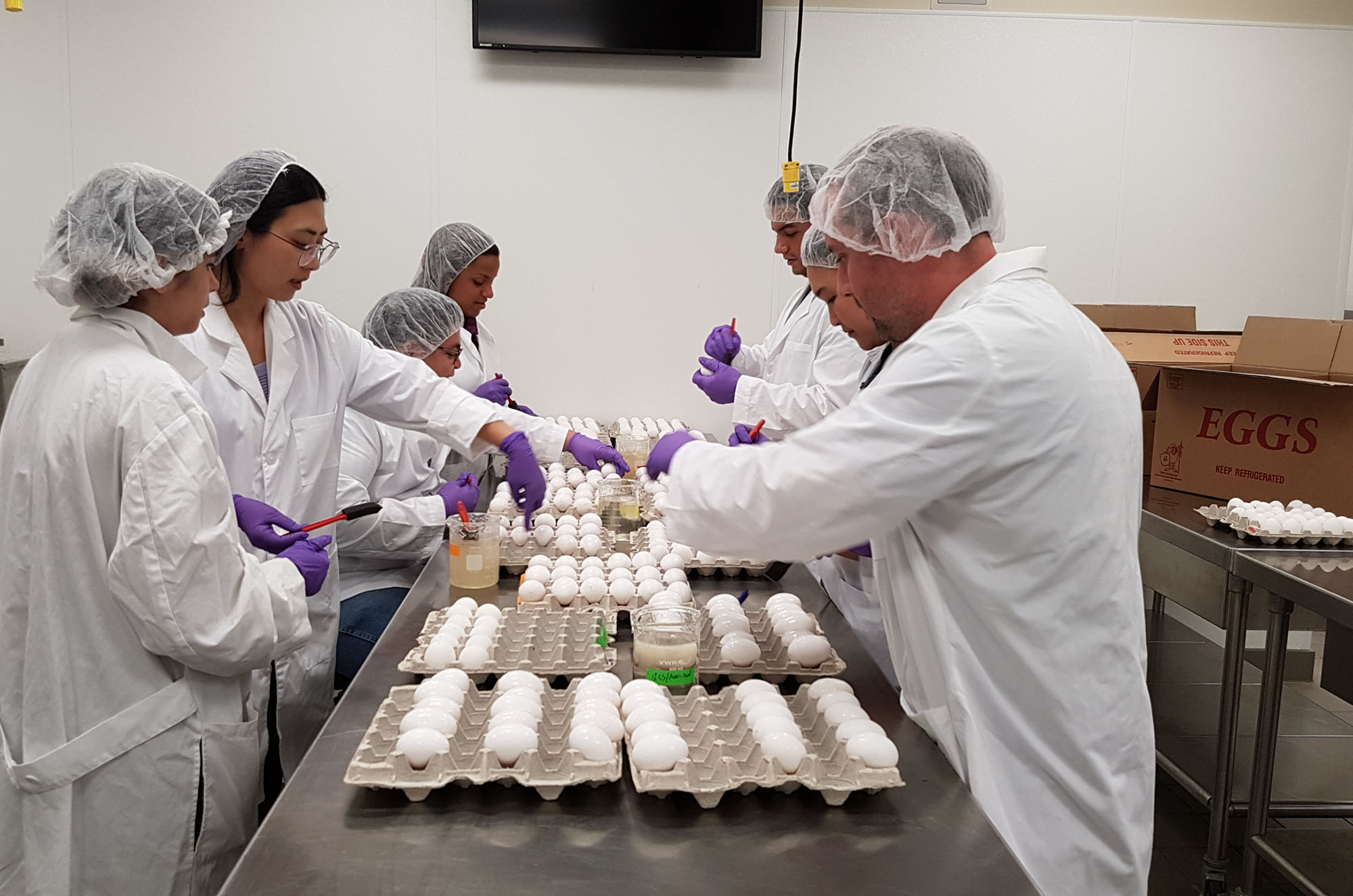
Researchers hand coat eggs with the chitosan solution.
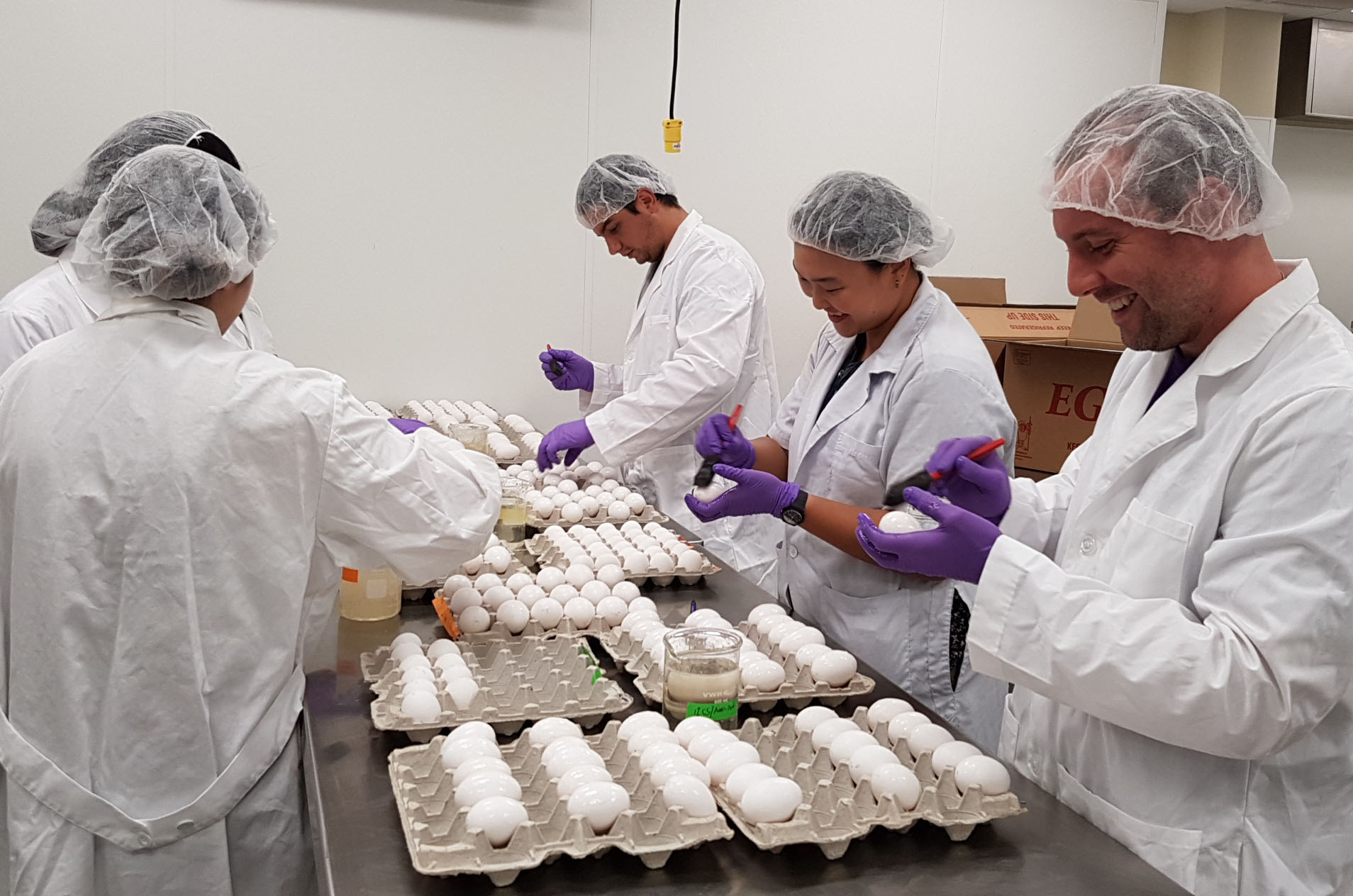
Researchers hand coat eggs with the chitosan solution.
An LSU Breakthrough
Prinyawiwaktul and his core team members – including Yixiao Shen, then an LSU PhD student, and professor Zhimin Xu of the LSU School of Nutrition and Food Science, or SNFS – set out to find a better way.
A breakthrough came when Shen initiated an idea to make high-molecular-weight chitosan soluble in water. Shen then performed research to prove the idea and obtained information for a patent application.
Work led by former PhD student Yupeng Gao, now an R&D food technologist with LSU AgCenter FOODii, contributed to the research that utilized the patented high-molecular weight chitosan to extend the shelf life of eggs.
The now-patented process makes some notable and value-added improvements:
- The water-based dissolving process takes a mere 15 minutes, compared with eight to 10 hours when using vinegar.
- The result of the process is a better barrier, conserving the quality of raw eggs longer, retaining a B grade, which the USDA categorizes as edible, for up to seven weeks at room temperature, compared with 2-4 weeks for noncoated eggs.
- Because acidic liquids are not involved, the process doesn’t have acidic impacts on smell and color.
“Imagine a catfish fillet coated with chitosan with an acid smell like vinegar,” Prinyawiwatkul said. “This patented chitosan eliminates the pungent acid odor of the coating or dipping solution, making it more desirable for use in food.”
In addition to eggs, Dr. Marlene Janes and her team of AgCenter food microbiologists have tested the patented high-molecular-weight water-soluble chitosan solutions as coatings and dipping solutions on ready-to-eat chicken, raw catfish, and shucked oysters. Results have demonstrated the effectiveness of the coating while pointing to further areas of study, Prinyawiwatkul said.
Benefits to Louisiana
Prinyawiwatkul said Louisianans, in particular, stand to benefit from LSU chitosan research, including those invested in seafood, poultry, and other industries, as well as consumers in general.
“First, the enormous amount of crustacean shell waste from Louisiana shrimp, crab, and crawfish processing can be used to produce chitosan,” he said, “which would help reduce costs for handling shell waste, benefiting the processors and also reducing environmental pollution.”
He said work by Janes and her team at the SNFS have shown positive results using the patented chitosan against food-borne pathogenic bacteria in fish and seafood, Louisiana favorites.
“Since oysters are consumed raw, strong antimicrobial properties are important to minimize the risk of foodborne illness,” he said. “Crab, shrimp, and crawfish are consumed all the time here in Louisiana, and our work can make consumption safer.”
What Comes Next?
Prinyawiwatkul said Wade Baumgartner, director of Sponsored Programs and Intellectual Property for the AgCenter, was supportive and instrumental in securing the patent.
Baumgartner said LSU has discussed the patented process with companies who might consider using it.
The ideal candidate, he said, would be an early adopter in the ingredient industry willing to undertake the education and client buy-in needed to introduce a new product.
Next Step
LSU's Scholarship First Agenda is helping achieve health, prosperity, and security for Louisiana and the world.


